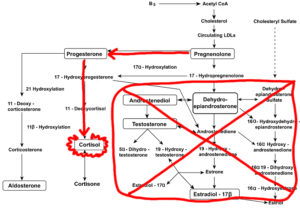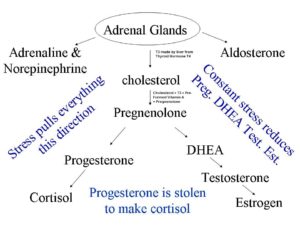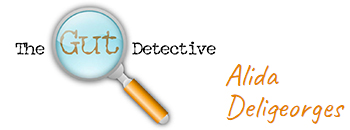Stages of Adrenal Fatigue
There are three stages of adrenal fatigue which include:
Stage 1: Alarm Reaction
This happens in normal life. It is characterized by abnormally high cortisol levels and low DHEA levels. High cortisol levels decrease serotonin and melatonin levels which may cause depression and insomnia, respectively. It is also an immunosuppressive which may result in a compromised immune system, resulting with frequent infections and illness.
High cortisol also inhibits the metabolism of T4, a thyroid pro-hormone produced by the thyroid gland, into the active T3 form. This can create a thyroid imbalance known as reverse T3 dominance. Circulating levels of T3 and T4 can test normal, despite hypothyroid symptoms being present.
Stage 2: Resistance Stage
Prolonged stress forces the body to “steal” pregnenolone from cholesterol to make cortisol.

Cholesterol levels begin to rise in compensation. However, hormonal imbalances can arise if there isn’t enough cholesterol to make them.

DHEA remains low whilst cortisol levels hover in the low-normal range, leaving you feeling tired and stressed, but functional.
Stage 3: Exhaustion Stage
At this point the adrenals can no longer adapt to stress and lose their ability to even produce adequate cortisol levels. Cortisol levels finally fall to low levels throughout most of the day just like DHEA, resulting in low adrenal function and exhaustion.
The adrenal gland sometimes offers adrenaline as a substitute for cortisol, released at the same times that cortisol levels have previously peaked. This makes people wake up at 2, 3, or 4 a.m., Not just slowly, but they wake up in a panic.
